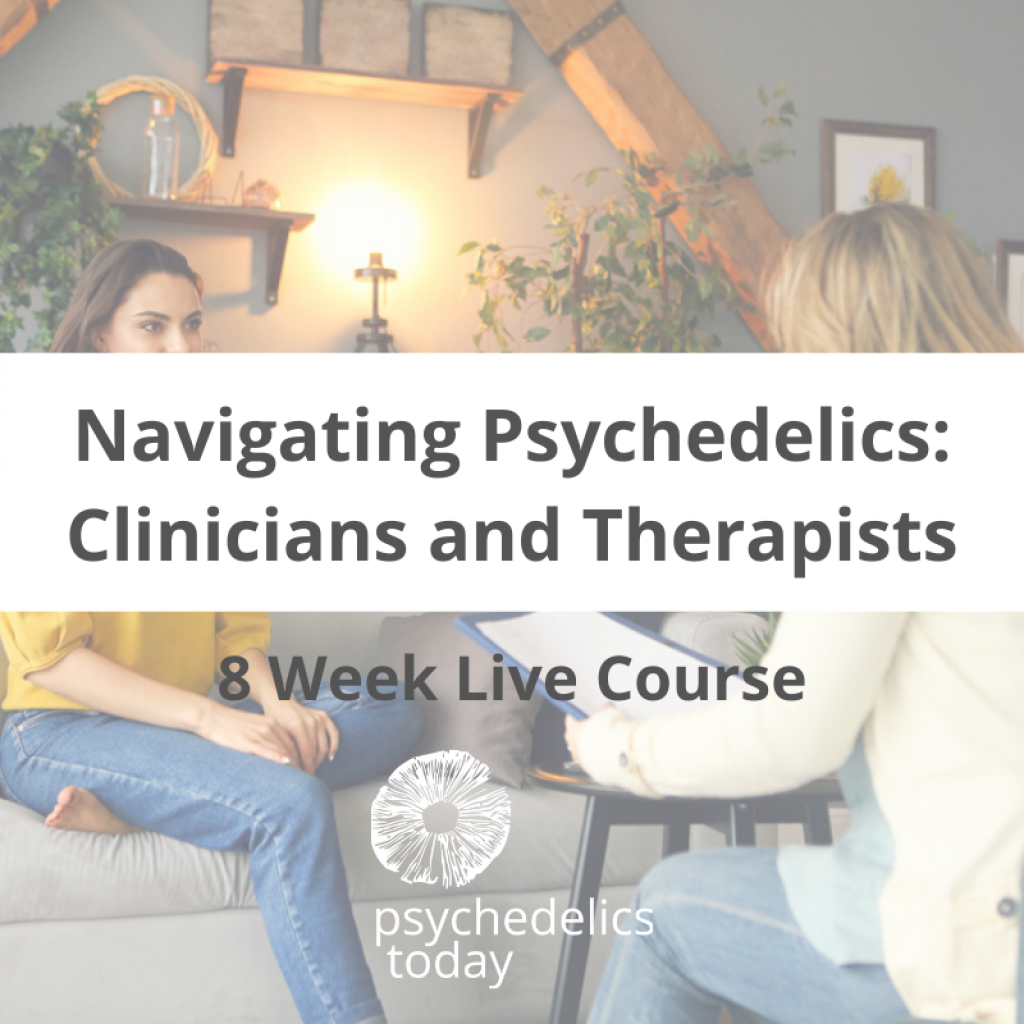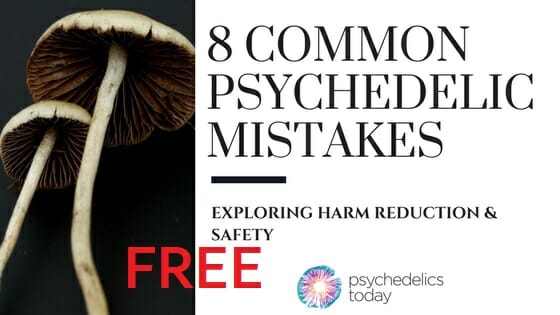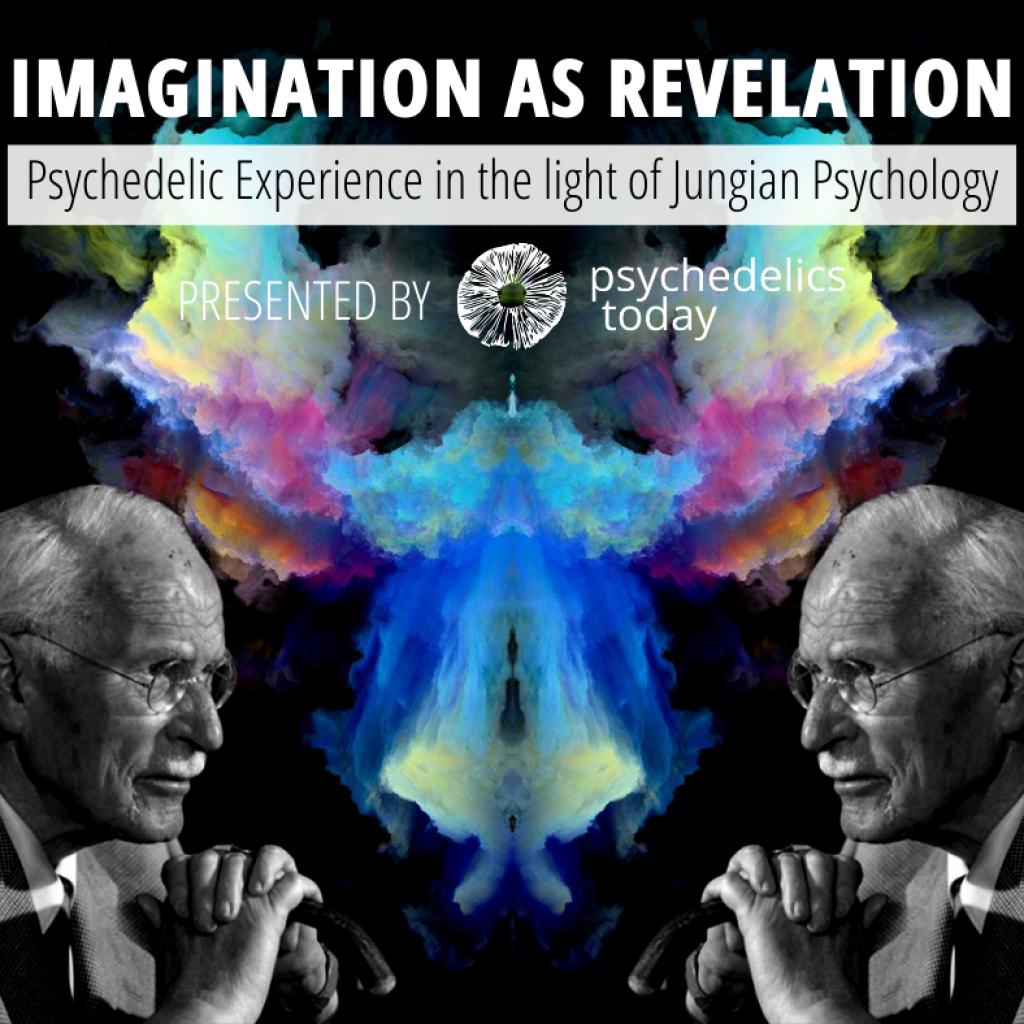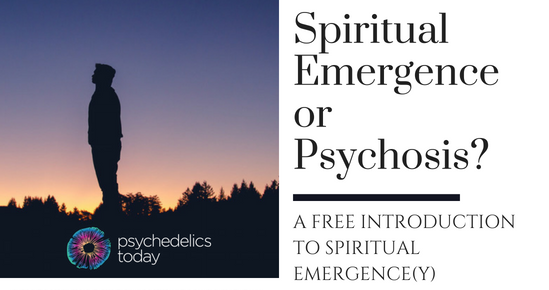By Michelle Anne Hobart, MA, SEC, AMFT
If we do not face the issue of medicine guide abuse with as much courage as the psychonaut faces the edges of reality and their own healing process, we would be missing an important opportunity to do the necessary work at hand for us in this realm. When else would we confront the Shadow so greatly as this past year, when fascism, a global pandemic, and ecological demise were no longer on the horizon in post-apocalyptic visions, but were instead upon us? As we begin to heal and recover from the last four years and detox from the underlying structures of oppression at the core, we realize all that is at stake.
The longing to be more connected and the need to create order out of the chaos of conflicting narratives combined with the simultaneous upsurge in fear of the virus, hate crimes, and political unrest, has created a swirl of catalytic enzymes with everything needed to activate a new wave of high-demand groups. In everything from the alt-right to the psychedelic underground, we see manifestations of high-control group dynamics, including charismatic leaders, propaganda, brainwashing, and the gaslighting of anyone with an opposing voice. Adding in the complexity of non-ordinary states with the accompanying loss of sense of self and agency, dissolving boundaries, and susceptibility, we have found ourselves deep in the psychedelic Shadow.
The current zeitgeist calls for a level of inquiry, openness, and capacity to withstand critique, without fear of losing the whole endeavor. We have an opportunity to refine, make the work more potent, and have more integrity and efficacy. This is the charge we have received: to name the ways that misuse of power in the guide/journeyer relationship manifests in traumatic consequences, to take actions to prevent future abuse, and help people heal from past abuse.
This article will explore the types of high-control group dynamics that perpetuate and amplify psychedelic guide abuse, dispel myths, and offer a healing path forward on individual and collective levels.
Demystifying High-Control Group Dynamics
I wrote this piece to better understand and to share about the dynamics that set into motion a cascade of loss of agency, loss of identity, and the inability to speak up and out against problematic behavior. We can understand it on a micro-level within families, and a macro-level with what we, as a country, are coming out of from the last four years. All of us, especially the most vulnerable, have been affected by blatant narcissistic abuse.
High-control groups (HCGs) are defined by the areas that are being controlled and by diminishing the will of the individual, while the affected person actually is manipulated into believing what’s happening is in their best interest. Or, in some cases, the perceived value of the cause outweighs personal needs, and their intuition and ethical compass can become faulty.
Steve Hassan’s BITE Model (Behavior control, Information control, Thought control, and Emotional control) is an entry point to begin to see the underlying infrastructure of HCGs. When we combine Hassan’s BITE model with data from Yale’s 1962 Milgram Obedience to Authority Study, Palo Alto High School’s 1967 Wave Experiment, and Phillip Zimbardo’s 1971 Stanford Prison Experiment, we begin to see how these forms of control and manipulation have great potency to influence the thoughts, words, and deeds of others in group dynamics.
In his book, Practice And All Is Coming: Abuse, Cult Dynamics, And Healing In Yoga And Beyond (Embodied Wisdom, 2019), Matthew Remski explores self-care and recovery while unpacking these dynamics, and cautions us to have discernment. The book’s final section includes a workbook for “better practices and safer spaces.” Janja Lalich and Madeline Tobias’ book, Take Back Your Life: Recovering from Cults and Abusive Relationships (Bay Tree, 1994), is a comprehensive reference on cultic mechanisms, paths to recovery, and therapeutic concerns. Its appendix, “Characteristics Associated with Cultic Groups,” written by Lalich and Michael Langone, is a useful analytical tool to discover if the group you or a loved one is in displays such features.
Lalich wrote another book with Karla McLaren called Escaping Utopia (Routledge, 2017), in which they share “the stories of 65 people from 39 different cults in more than a dozen countries.” On her website (which features her very helpful “Systems of Influence” checklist, McLaren talks about a common occurrence that happens to people:
“When powerful systems of influence are active, people may lose their sense of self, their critical thinking, and their autonomy – and when they do, they can be converted into obedient followers. One of the strange side effects of this process is that converts may begin to believe that they have free will, and that they have intentionally chosen to de-self and obey. They become true believers and lose any real awareness of the influence methods that reshaped and resocialized them – and they come to believe that they willingly accepted this personal transformation to be one of the chosen few. This seems bizarre, but it’s a crucial feature of toxic systems of influence and persuasion. And it’s possibly the most difficult feature for someone who hasn’t experienced it to fully understand. “
People get hooked through a combination of insiders finding out what they want and believe and offering them just that. It is essentially sales, and the lieutenants/recruiters are the best salespeople on the team. They may say: “You need to offer this to your clients in order to really help them,” “You’re special, and I don’t know why you’re just now being invited,” “This is your destiny,” “You’re perfect for our program/cause/community, and together we can create a better world.”
Then, one is broken down to induce further vulnerability on physical, emotional, mental, and spiritual levels, through methods including, but not limited to: overwork, lack of rest or nutrition, altered states, and cathartic and re-traumatizing processes. When one sees abuses or questionable behavior, they are gaslit or judged as being unwell in some fundamental way, and coerced and guilted into silence. Once a person has been broken down, they no longer have a will of their own- a new persona is rebuilt that matches the need of the group and serves as a proxy for the leader’s enactment of will.
A window into these dynamics- the allure and encroachment, followed by people awakening to what’s happening, leaving, and fighting back, can be seen in the HBO docuseries, “The Vow,” about the NXIVM sex cult. Be sure to watch it and consider the synchronicities you see between this group and other organizations, or even patterns in the rise of authoritarian governments on the planet, in various communities, or within family systems. It is vital to understand these patterns on both micro and macro levels to be able to tend to the underlying wounds that give rise to these structures and reactions, defenses, trauma enactments, and conscious or unconscious perpetuation of harm.
Psychedelic Guide Abuse and the Problem of Community Complicity
As the Shadow of Psychedelics makes itself more overtly known to us though lived experience and our holding space for those who have been harmed, it has become vital for me, as a clinician, to name and express these concerns- for the survivors, and as an advocate for the ethical employment of entheogenic therapies. Many topics arise from the depths, including appropriation, misuse of power, complicity through economic ties, and allyships with other communities as funnels.
The implication that psychedelics will be the panacea that will cure all the ills of our time on the planet may blind some to the problems at hand and the detoxification that needs to be done to make these practices safe again (which will ultimately be in service of furthering the movement overall). We notice, as well, the lack of proper training in how to honor and work with trauma as well as extraordinary states catalyzed by the medicine, such as Spiritual Emergence, and lack of oversight and accountability within communities (if they are underground).
Two examples of psychedelic guide abuse that everyone is already familiar with are the stories of Octavio Rettig and Gerry Sandoval, highlighted on 5-meo-dmt-malpractice.org, which displays the following open letter:
Join us in standing against psychedelic and entheogenic malpractice.
For many years there has been concern in psychedelic and entheogenic circles about what appears to be reckless, unethical, and potentially criminal behavior by Dr. Octavio Rettig and Dr. Gerry Sandoval in their capacity as facilitators of ‘Bufo’, the 5-MeO-DMT containing secretion of the Bufo alvarius toad.
Despite difficulties in gaining a clear picture of the overall situation, there is now overwhelming evidence that these concerns are well founded. For that reason we, coming from the psychedelic, entheogenic, and broader consciousness communities, have decided it is necessary to make this public statement.
A brief list of reported malpractices by Octavio include: dangerous sessions leading to hospitalizations and deaths; psychological and physical violence; non-consensual interventions and abuses of power; and neglect of people who have been damaged.
A brief list of reported malpractices by Gerry include rape; clandestine drugging; planting drugs on people with intent to endanger them; intentional overdosing; grossly unsafe serving practices; psychological manipulation; and financial fraud.
The collective consequences, apart from death, include physical injuries, psychological trauma, ongoing mental health issues, and shell-shocked and divided entheogenic communities.
For these reasons we, who come from the psychedelic, entheogenic, or simply the broader consciousness community, think it is time to take a stand. Now that these long running problems have come clearly to light, choosing to push them back into the shadows is no longer an option. Silence in the face of this knowledge risks making us complicit in any future abuses. It also risks completely distorting the role of this entheogen as it makes its way into the world.
We invite you to sign and take a stand with us.
Another example is in the March 3, 2020 Quartz article “Psychedelic therapy has a sexual abuse problem,” by Olivia Goldhill. In the article, Lily Kay Ross, who said she felt the need to leave her psychedelic work behind after speaking out about her rape by an ayahuasca shaman in the Amazon, shared, “I was told explicitly that I might single-handedly re-instigate the war on drugs and undo all of the advancements in the field of psychedelic research since the 1960s. There’s the idea that psychedelics are so important and so wonderful that the train has to keep going. We can’t slow down to get the rapists off the train.”
Ross will be speaking on a panel at the Psychedelics, Madness, and Awakening Conference in early 2021 with therapist and author of Outside Mental Health: Voices and Visions of Madness, Will Hall, among others. They will be sharing their concerns about the impact of psychedelic guide abuse. In Will Hall’s most recent Psychedelics Today appearance, he discussed the shadow side of psychedelics, and challenged us all to look into what our motivations are, and how they align to the movement’s ethics:
“What is the commitment? Is the commitment to get psychedelic drugs accessible at all costs? And we’re going to lie, cheat, and steal our way to get there? Or is the commitment to trust that truth is the way? And if we just stick with the truth, that is how we change society?”
Dispelling the Myths
1) These Groups will naturally self-correct.
False. HCGs are closed systems that self-perpetuate their beliefs and dynamics and create a feedback loop. Thus, they not only create homeostasis, or a balancing within that keeps things the same, but this homeostasis may also intensify as the closed system feeds back upon itself. In the groundbreaking book, The Systems View of Life: A Unifying Vision, authors Fritjof Capra & Pier Luigi Luisi have this to say with respect to feedback loops: “Feedback loops not only have self-balancing effects but may also be self-amplifying” (Capra & Luisi, 2014, p. 91).
Knowing this, we can see that by doing nothing, nothing will change. Many of us have thought that because the medicines are working in the ceremonies and sessions, they will help to automatically awaken and shift dynamics. For some, that is the case. For others, it deepens the trauma bonding them to the guide and HCG, and creates an even stronger disorganized attachment, which strengthens the reliance upon the guide and, by proxy, the medicine.
2) The abusive guides must not realize they are doing harm.
This is based on an assumption that folks who work with medicine are free from the traits that are self-serving, manipulative, or Shadow manifestations. Maybe these are unconscious dynamics/trauma re-enactments, or maybe they are sadistically harming. I will not participate in the othering, though, lest I fall prey to enantiodromia (a Jungian principle that states that over time, an extreme, one-sided tendency can unconsciously change into its polar opposite). But suffice it to say that not all guides and facilitators of the work prioritize the healing and service for the highest good of all beings in their journey toward wholeness. Their motivations might be financial or for power, feeding the ego that gives them that godlike rule over folks in non-ordinary, vulnerable states. How do we demand accountability and create the change that needs to be made in these situations? If it is unconscious, how can the gift of the medicines not intensify these defensive structures, but instead melt them away?
Can we lean into the wisdom of restorative and transformative justice to both understand the wounds that create those structures, and at the same time, keep those that are vulnerable safe from the abuse? Which part of this web of healing are you? Are you an advocate, ally, supporter, or educator? Know that each of us is needed to heal this together. And we must keep in mind and heart the words of Thich Nhat Hanh: “When another person makes you suffer, it is because he suffers deeply within himself, and his suffering is spilling over. He does not need punishment; he needs help. That’s the message he is sending.”
3) Others in the community, and outside of it, know and don’t care.
This myth stems from the idea that “nobody is doing anything about it.” We need to remember that the trauma which occurs while in non-ordinary states of consciousness is so profound and the recovery so delicate, we must not place the burden of transforming this issue on the backs of the survivors. We all must acknowledge the harm that is being done, and those who are complicit out of financial necessity need to do the right thing and disconnect their umbilical cord from the toxic womb. If the community complicity is bound to the group’s silence and secrecy, and has lost agency and capacity to speak out against abuses, then more support is needed. And more support is needed for those that do see, and when they are excised for going against the grain, they need to be witnessed, held, and cared for.
Because so many of the harmful communities are underground, there is no way to go to above-ground sources for accountability and ethical quality-control. So how can the wider community of psychedelic educators and healers enact the change that is needed? This is a question in process- in deep inquiry now, and I would love to see more discussion, panels, and think tanks, here and through other platforms and organizations.
A Way Forward: Ethics, Education, and Accountability
The amplification of the intensity of trauma within entheogenic extraordinary states makes the impact of guide abuse, gaslighting, and complicity much vaster, and the effects deeper and more difficult to recover from. I propose that there is a way forward, beginning by naming and honoring the reality of these experiences, offering a haven for the abused, and sharing new ethical standards, not only for the above-ground practitioners, but for the underground as well. This can be community-based, restorative and transformative justice, and peer-led; informed by open dialogue, harm reduction, and radical humanism.
Remember: Cognitive liberty is not only the freedom to, it is also the freedom from.
How does one resist these dynamics and methods of control and manipulation, maintain integrity in the sacred work we are undertaking, and therefore protect the safety and efficacy of psychedelic clients? First, do an inner inquiry into your relationship to power- others’ and your own. It is very likely that in entheogenic non-ordinary states of consciousness, that COEXes (layers of resonant trauma imprints) may re-create trauma enactments, whether you are the sitter or the journeyer. There may also be role-reversal, the unconscious’ way of balancing the scales. The Shadow activations thus may be on the continuum of repetition or counterpoint.
The guides must have adequate education on trauma, spiritual emergence, and emergency, be well-versed in transpersonal psychology, and have the capacity not only to validate the reality of subtle realms, but great respect and competence to work with all of its parts: entities, energies, possession states, archetypes, lifetimes, and dimensions. At a minimum, each guide must have a list of resources for trained trauma therapists, Spiritual Emergence Coaches and energy workers, shamanic practitioners, and psychopomps.
It is our ethical responsibility to maintain a clear and protected container for our clients. When a breach of ethics is witnessed, it is vital to intervene in some way to protect the vulnerable. Check your complicity. What keeps you silent? Is it livelihood? Access to medicines? The stream of potential clients? What is the cost of work if it is founded on harm, manipulation, abuse, and potential re-traumatization? Instead, bring curiosity, compassion, and humility to each session, and the courage to trust the Inner Healer of the client and the inner compass of the soul.
On a community level, we must replace these unwell systems of control with what Karla McLaren calls “healthy systems of influence.” She shares about the qualities of these healthy systems, which can help us orient when faced with HCGs or on behalf of others we care about. She says:
“Healthy systems of influence involve rules that make sense, clear checks and balances on power, responsive and respectful leadership, and goals that are livable and beneficial for everyone.
- The system is democratic; all members have a say in how the rules and regulations are developed and implemented.
- Members have the right to question, doubt, and challenge the system.
- Checks and balances are in place so that the system remains flexible, responsive, and fair.
- The system supports equality, and no person is above the rules.
- The system incorporates fairness, justice, and leniency; no one is humiliated, abused, or shunned.
- Members appreciate the sense of structure and discipline that the system provides.
- The system provides a healthy sense of belonging and camaraderie.
- The system helps members develop a unified group identity that does not erase their own identities.
- The group encourages critical thinking and welcomes ideas from outside the system.
When a system of control is healthy, its structure supports and nurtures the people inside it. When a system is toxic, its structure crushes, demeans, and dehumanizes the people trapped within it.”
I would like to close this piece with a quote from Matthew Remski, who offers us hope and inspiration in the possibility of what he calls an “empowerment network:”
“The values expressed in an empowerment network directly opposed those in the abuse-enabling network, because the goal of victims and their allies is to deconstruct and re-distribute power, rather than to capture and hoard it. Where secrecy silenced harm, there will now be transparent speech. Where deception confounded critical thinking, there will now be evidence and research. Where power had crystallized vertically, there will now be a horizontal sharing of space and dignity… Harm is not inflicted in a vacuum, and healing is not accomplished alone“ (Remski, 2019, p. 242).
References
Capra, F., & Luisi, P. L. (2016). The Systems View of Life: A Unifying Vision (Reprint ed.). Cambridge University Press.
Hassan, S. (2015). Combating Cult Mind Control: The #1 Best-selling Guide to Protection, Rescue, and Recovery from Destructive Cults. Freedom of Mind Press.
Lalich, J., & McLaren, K. (2017). Escaping Utopia: Growing Up in a Cult, Getting Out, and Starting Over (1st ed.). Routledge.
Lalich, J., & Tobias, M. (2006). Take Back Your Life: Recovering from Cults and Abusive Relationships (2nd ed.). Bay Tree Publishing.
Remski, M. (2019). Practice And All Is Coming: Abuse, Cult Dynamics, And Healing In Yoga And Beyond. Embodied Wisdom Publishing.
Zieman, B. (2017). Cracking the Cult Code for Therapists: What Every Cult Victim Wants Their Therapist to Know. CreateSpace Independent Publishing Platform.
About the Author
Michelle Anne Hobart, MA, SEC, AMFT is a teacher, writer, and Associate Marriage and Family Therapist at the Center for Mindful Psychotherapy. She trained as a Spiritual Emergence Coach with Emma Bragdon, works closely with the Gnosis Retreat Center project, and among other collaborations, co-facilitates Psychedelics Today’s Spiritual Emergence Course with Kyle Buller. She offers individual, couple, and group therapy, and leads community wellness workshops and retreats. Michelle graduated from the Integral Counseling Psychology program at CIIS in May 2018, she finished her second book, Holding Sacred Space in February 2020, and is in awe of the beautiful opportunities to support others that the universe provides her with through writing, being a therapist, and her other energy healing modalities. You can learn more at michelleannehobart.com.





